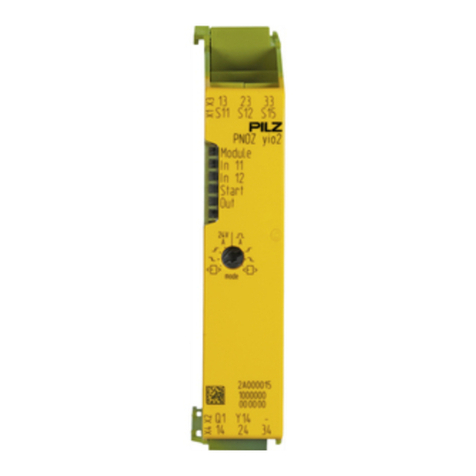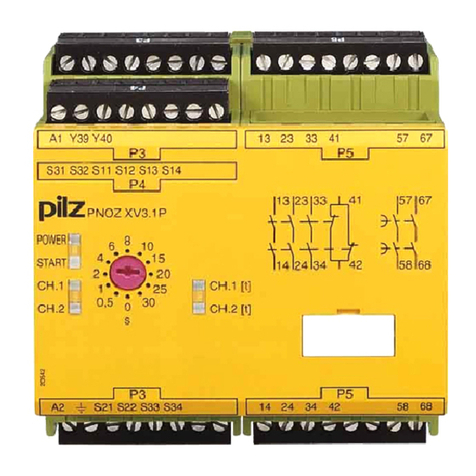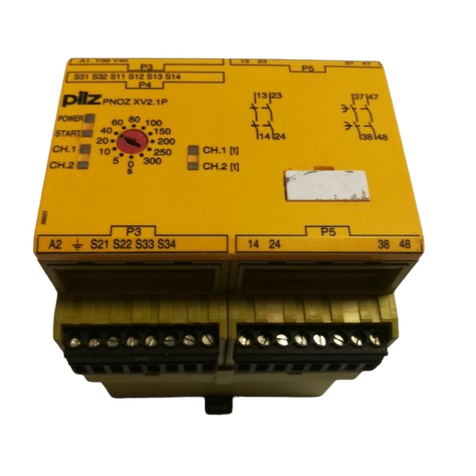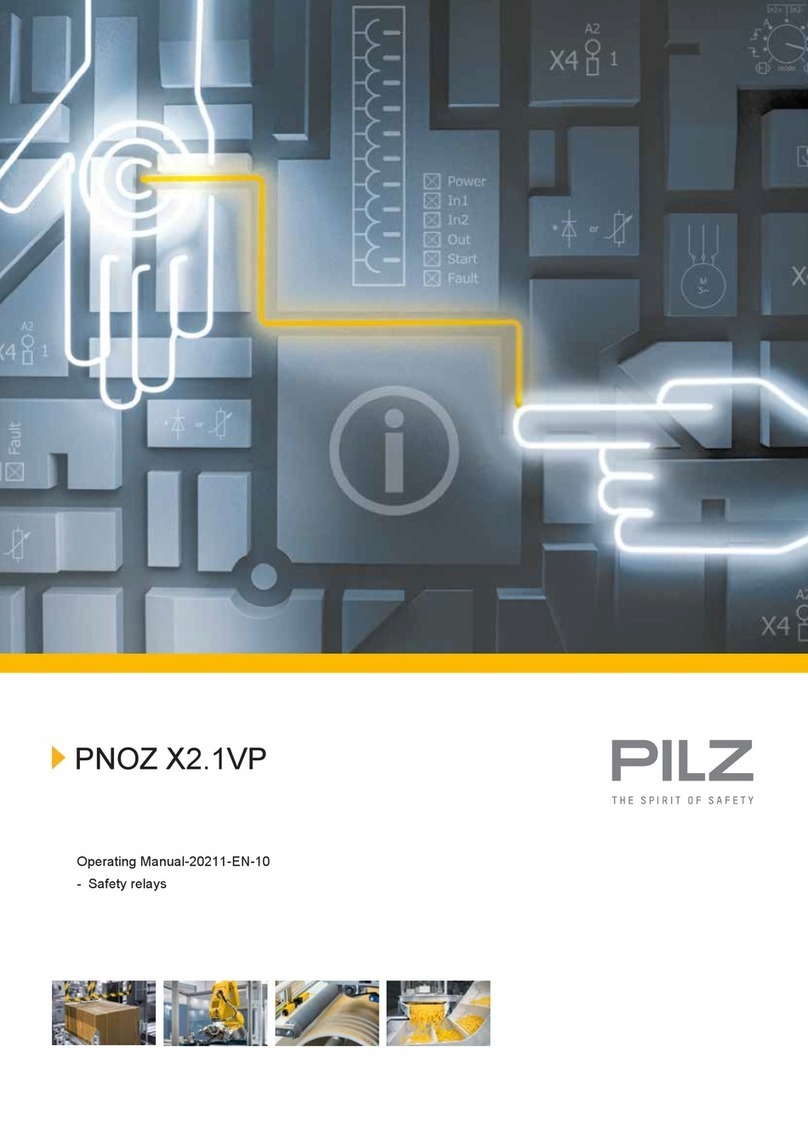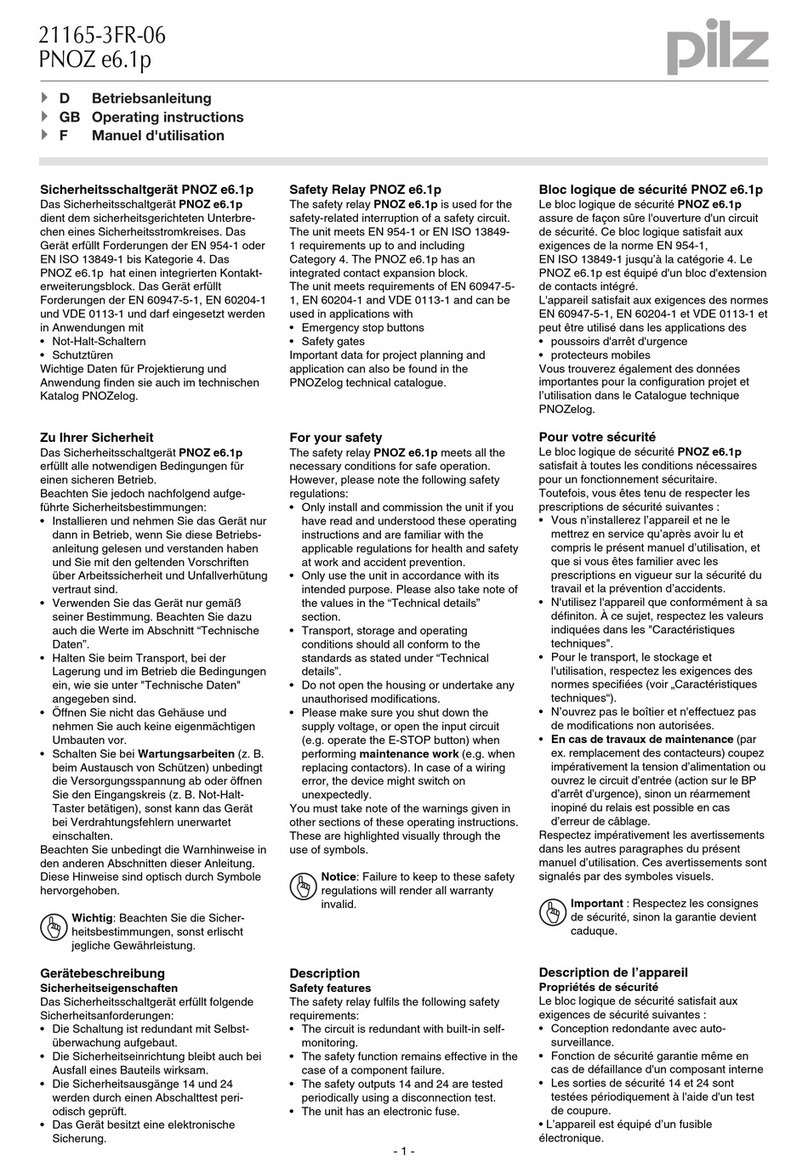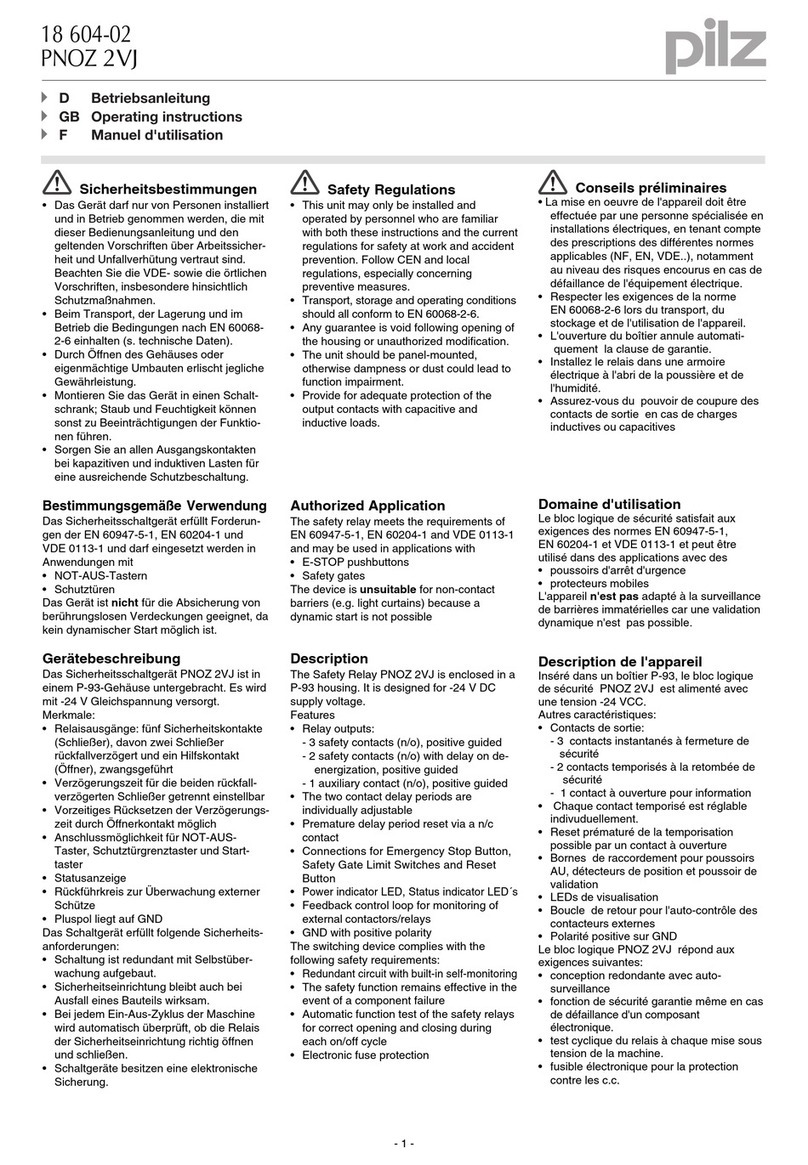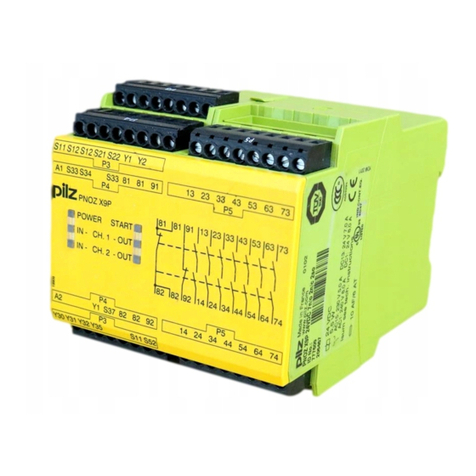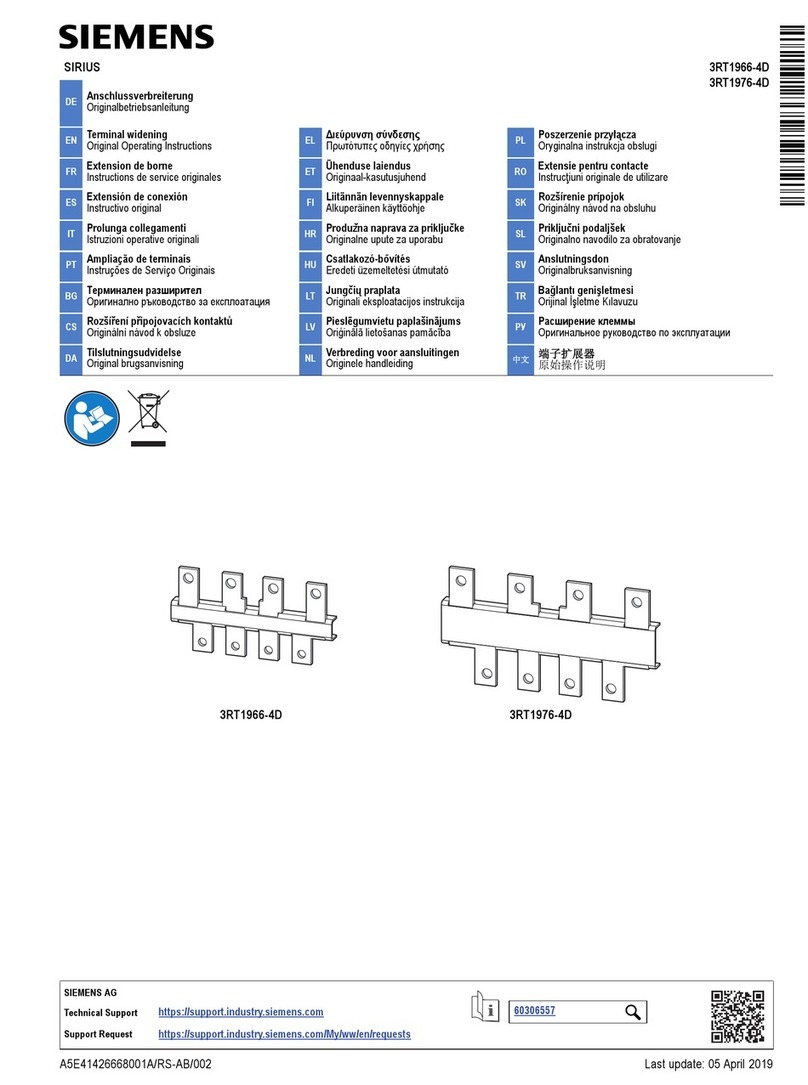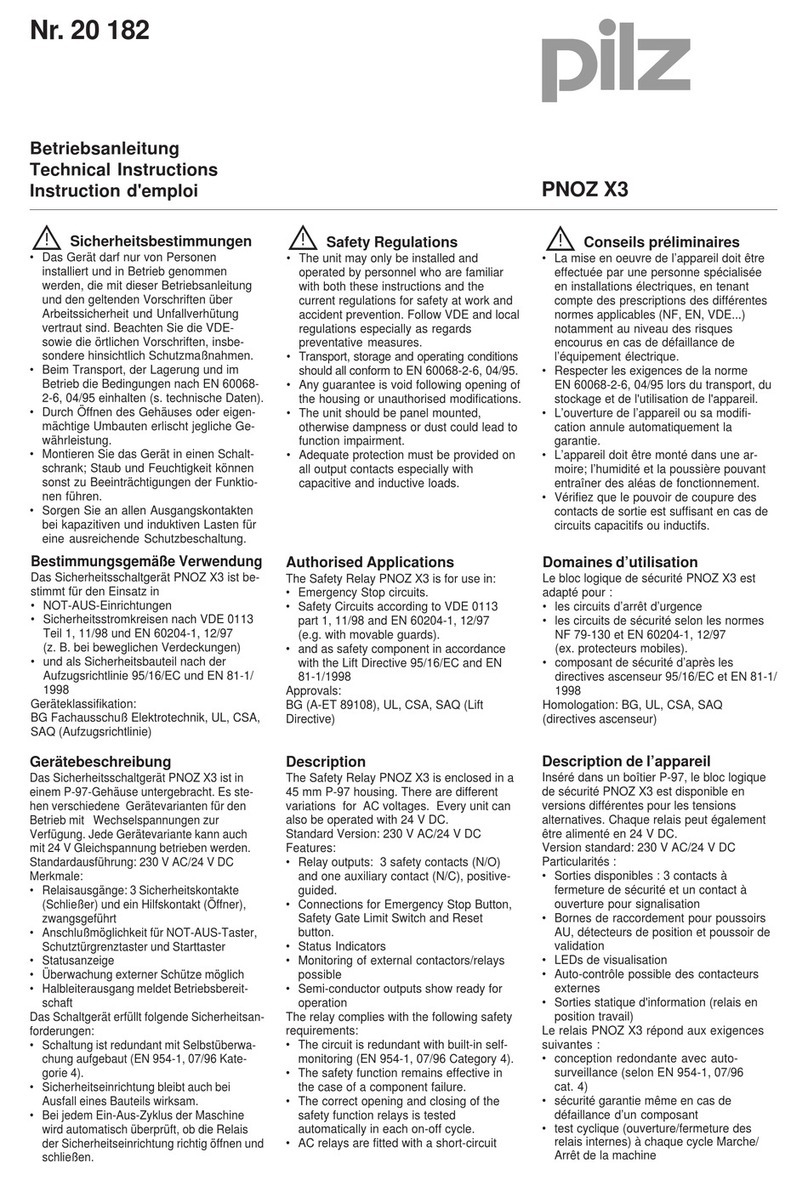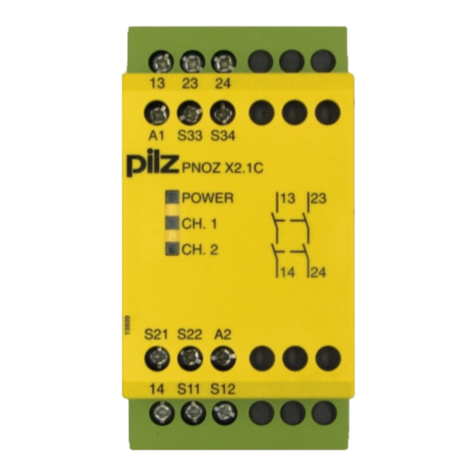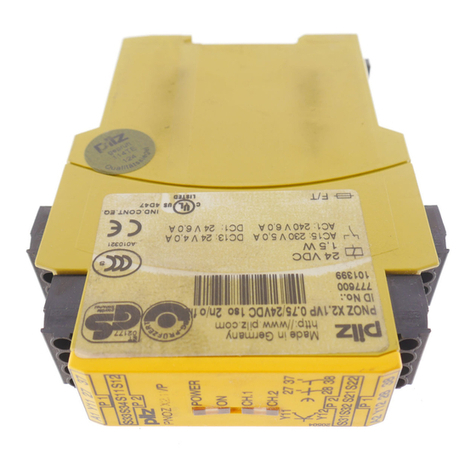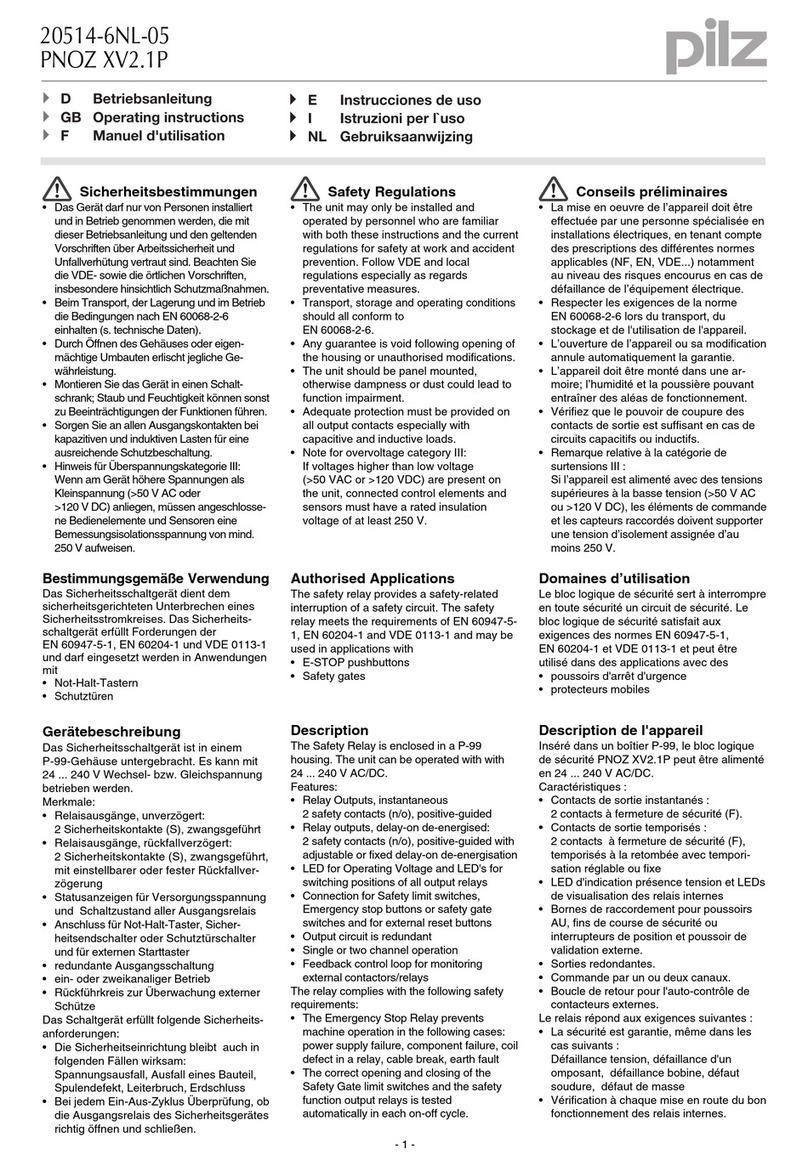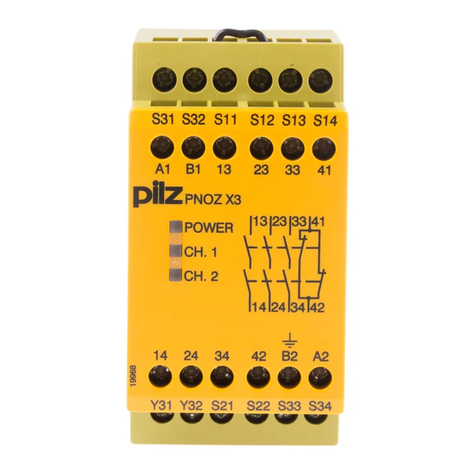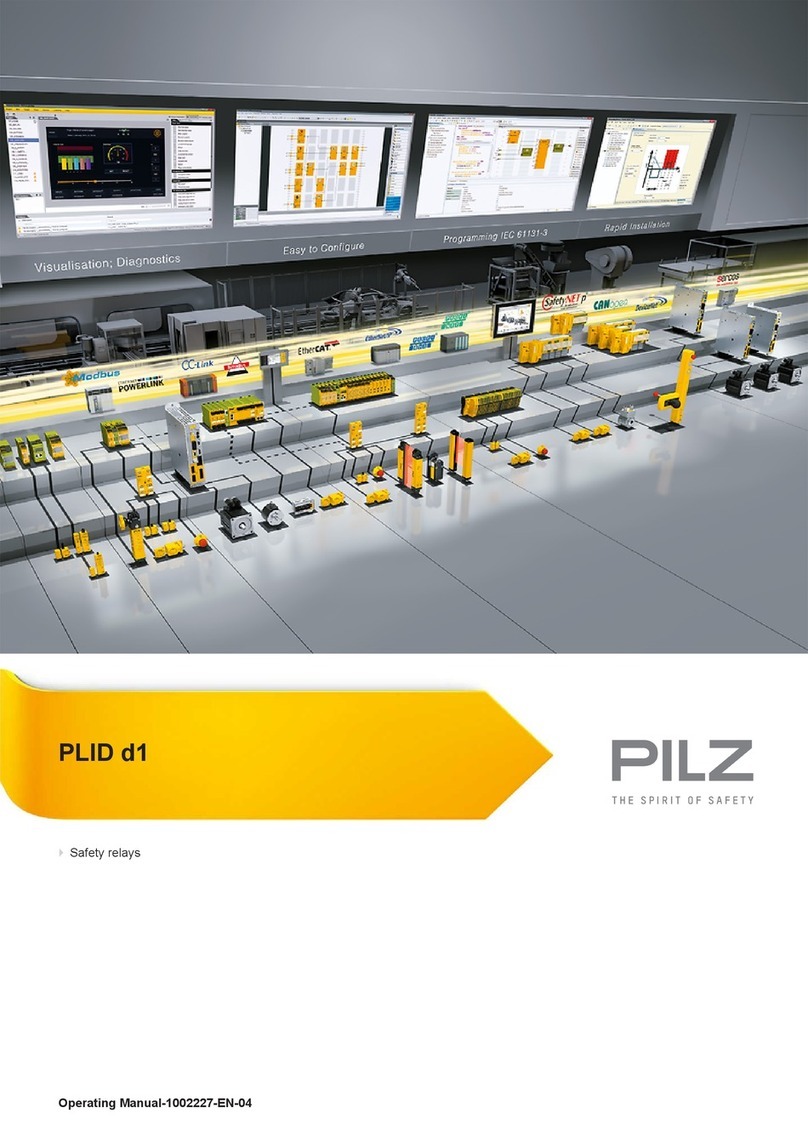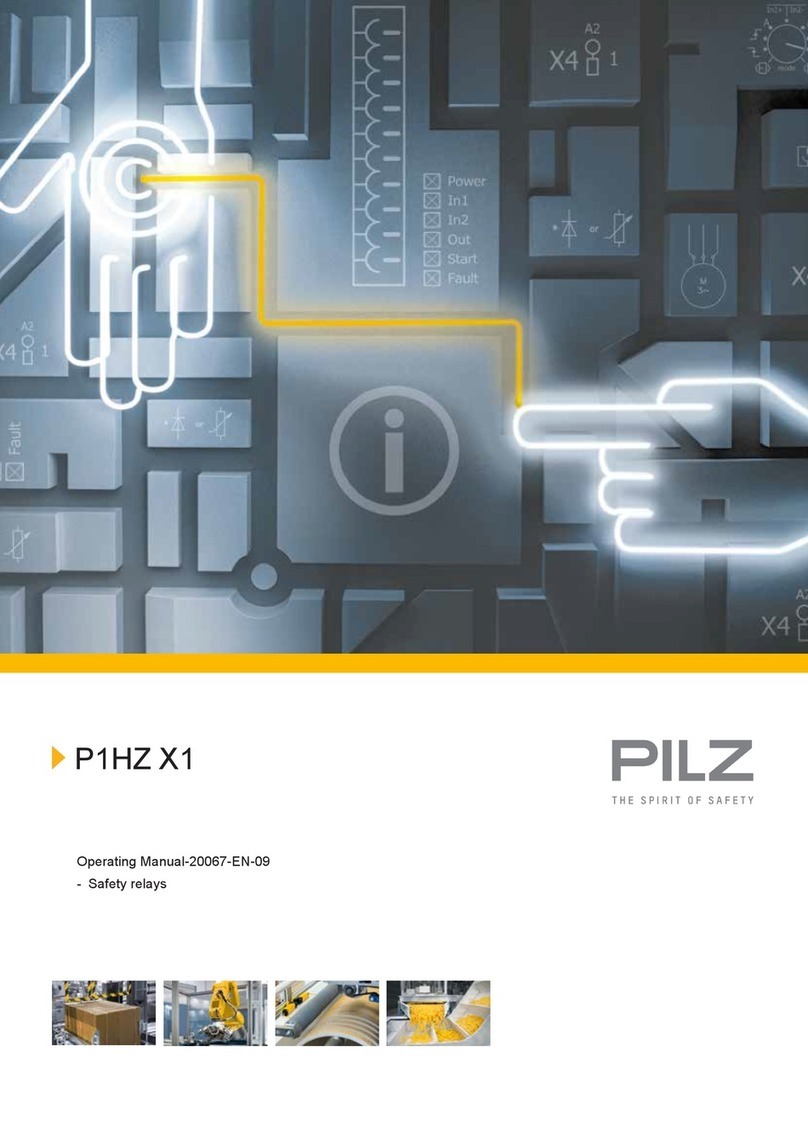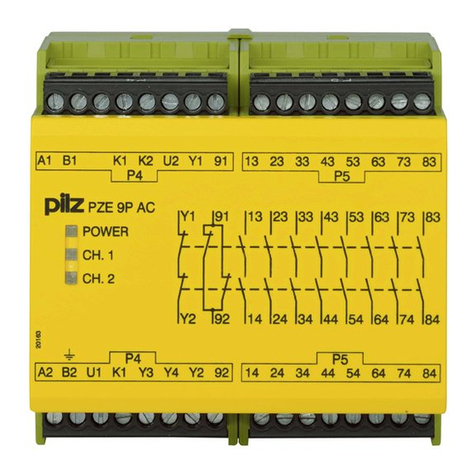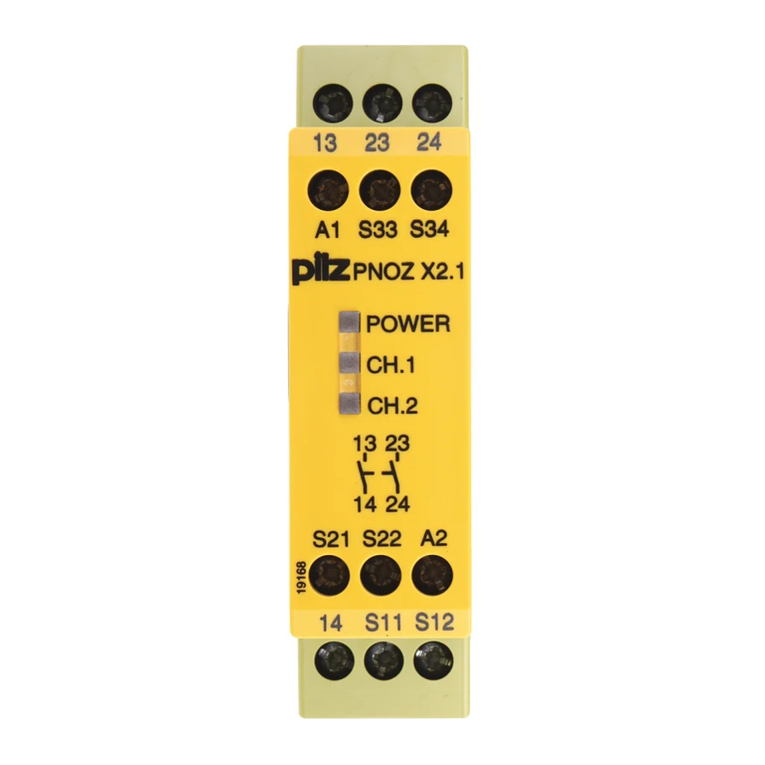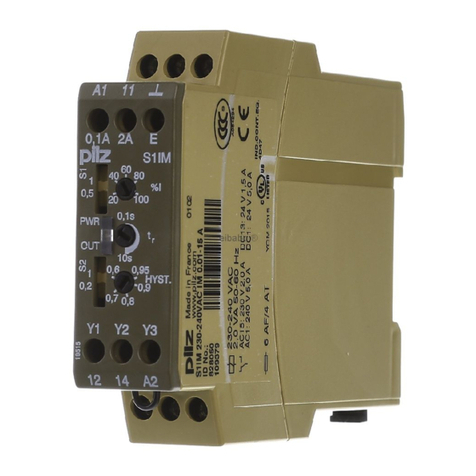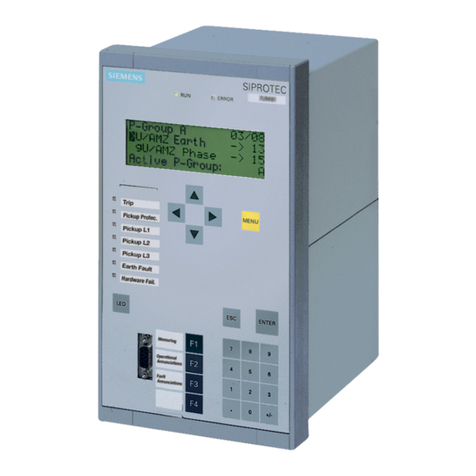- 2 -
Function Description
The relay PNOZ XV2 provides a safety-
oriented interruption of a safety circuit. When
the operating voltage is supplied the LED
"Power" is illuminated. The unit is ready for
operation, when the reset circuit S13-S14 is
closed or a reset contact at S33-S34 was
opened and closed again. The status
indicator "start" illuminate.
• Input Circuit closed (e.g. the Emergency
Stop button is not pressed):
Relays K1, K2, K3 and K4 energise and
retain themselves. The status indicators
for "CH.1", "CH.2" and "CH.1(t)", CH.2(t)"
illuminate. The safety contacts (13-14/23-
24/37-38/47-48) are closed.
• Input Circuit is opened (e.g. Emergency
Stop is pressed)
Relays K1 and K2 de-energise. The status
indicators for "CH.1" and "CH.2" go out.
The safety contacts 13-14/23-24 will be
opened (redundant). Following the delay-
on de-energisation period, relays K3 and
K4 de-energise. The safety contacts 37-38
and 47-48 opens and the LED "CH.1(t)"
and "CH.2(t)" extinguish.
The unit may only be reset once the delay-
on-de-energisation period has lapsed and all
E-Stop and safety contacts are closed.
Interruption of Delay-on De-energisation:
By opening the contact Y39-Y40 i.e.
pressing a button connected the set delay-
on de-energisation will be interrupted and
the safety contacts 37-38 and 47-48 will
open immediately.
Operating Modes
• Single-channel operation: Input wiring
according to VDE 0113 and EN 60204, no
redundancy in the input circuit, earth faults
are detected in the emergency stop
circuit.
• Two-channel operation: Redundancy in
the input circuit, earth faults in the
Emergency Stop circuit and shorts across
the emergency stop push button are also
detected.
• Automatic reset: Unit is active as soon as
the input circuit is closed.
• Manual reset with monitoring: The unit is
only active if, the reset circuit (S33-S34) is
opened before closing the safety input
circuit, and then the reset circuit is closed
at least 300 ms after closing the safety
input circuit. This prevents automatic reset
and the reset button bridging.
Funktionsbeschreibung
Das Schaltgerät PNOZ XV2 dient dem sicher-
heitsgerichteten Unterbrechen eines Sicher-
heitsstromkreises. Nach Anlegen der
Versorgungsspannung leuchtet die LED
"Power". Das Gerät ist betriebsbereit, wenn
der Startkreis S13-S14 geschlossen ist oder
ein Startkontakt an S33-S34 geöffnet und
wieder geschlossen wurde. Die Statusan-
zeige "start" leuchtet.
• Eingangskreis geschlossen (z. B. NOT-
AUS-Taster nicht betätigt):
Relais K1, K2, K3 und K4 gehen in
Wirkstellung und halten sich selbst. Die
Statusanzeigen für "CH.1", "CH.2" und
"CH.1(t), "CH.2(t)" leuchten. Die Sicher-
heitskontakte 13-14/23-24/37-38/47-48 sind
geschlossen.
• Eingangskreis wird geöffnet (z. B. NOT-
AUS-Taster betätigt):
Relais K1 und K2 fallen in die Ruhestellung
zurück. Die Statusanzeige für "CH.1" und
"CH.2" erlischt. Die Sicherheitskontakte 13-
14 und 23-24 werden redundant geöffnet.
Nach Ablauf der eingestellten
Verzögerungszeit fallen die Relais K3 und
K4 zurück. Die Sicherheitskonstakte 37-38
und 47-48 öffnen und die LED "CH.1(t)"
und "CH.2(t)" erlöschen.
Bevor das Gerät erneut gestartet werden
kann, muß die Verzögerungszeit abgelaufen
und alle NOT-AUS- und Sicherheitskontakte
müssen wieder geschlossen sein.
Verzögerungszeit unterbrechen:
Durch Betätigen eines Reset-Tasters (Y39-
Y40) wird die eingestellte Verzögerungszeit
unterbrochen und die Sicherheitskontakte 37-
38 und 47-48 sofort geöffnet.
Betriebsarten:
• Einkanaliger Betrieb: Eingangsbeschaltung
nach VDE 0113 und EN 60204, keine
Redundanz im Eingangskreis, Erdschlüsse
im Tasterkreis werden erkannt.
• Zweikanaliger Betrieb: Redundanter Ein-
gangskreis, Erdschlüsse im Tasterkreis
und Querschlüsse zwischen den Taster-
kontakten werden erkannt.
• Automatischer Start: Gerät ist aktiv, sobald
Eingangskreis geschlossen ist.
• Manueller Start mit Überwachung: Gerät ist
nur aktiv, wenn vor dem Schließen des
Eingangskreises der Startkreis (S33-S34)
geöffnet wird und mind. 300 ms nach dem
Schließen des Eingangskreises der
Startkreis geschlossen wird. Dadurch ist
eine automatische Aktivierung und
Überbrückung des Starttasters ausge-
schlosssen.
Description du fonctionnement
Le relais PNOZ XV2 assure de façon sure,
l’ouverture d’un circuit de sécurité. A la mise
sous tension du relais (A1-A2), la LED
"Power" s'allume. Le relais est activé si le
circuit de réarmement S13-S14 est fermé ou
si le contact de réarmement sur S33-S34 a
été ouvert puis refermé. La LED "start"
s'allume.
• Circuits d'entrée fermés (poussoir AU non
actionné) :
Les relais K1, K2, K3 et K4 passent en
position travail et s'auto-maintiennent. Les
LEDs "CH.1", " CH.2" et "CH.1(t)",
"CH.2(t)" s'allument. Les contacts de
sécurité (13-14/23-24/37-38/47-48) sont
fermés.
• Circuits d'entrée ouverts (poussoir AU
actionné) :
Les relais K1 et K2 retombent. Les LEDs
"CH.1" et "CH.2" s'éteingnent. Les
contacts de sécurité 13-14/23-24
s'ouvrent. Au bout de la temporisation
affichée, les relais K3 et K4 retombent.
Les contacts de sécurité 37-38/47-48
s'ouvrent et les LEDs "CH.1(t)" et
"CH.2(t)" s'éteignent.
Les canaux d'entrée doivent être refermés et
la temporisation écoulée avant de pouvoir
réarmer à nouveau le relais.
Arrêt de la temporisation
Un action sur un BP rellé au bornes Y39-
Y40 (contact à ouverture) permet
d'interrompre prématurément la
temporisation et d'ouvrir instantanément les
contacts de sortie 37-38 et 47-48.
Modes de fonctionnement
• Commande par 1 canal : conforme aux
prescriptions de la EN 60204, pas de
redondance dans le circuit d’entrée, la
mise à la terre du circuit d’entrée est
détectée
• Commande par 2 canaux: circuit d’entrée
redondant, la mise à la terre et les courts-
circuits entre les contacts sont détectés.
• Réarmement automatique : le relais est
activé dès la fermeture des canaux
d’entrée.
• Réarmement manuel auto-contrôlé: le
relais n'est réarmé que si le circuit de
réarmement (S33-S34) est ouvert avant la
fermeture du circuit d'entrée, puis refermé
au min. 300 ms après la fermeture du
circuit d'entrée. De ce fait un réarmement
automatique ou un pontage du poussoir
de validation est impossible.
Fig. 1: Innenschaltbild/Internal Wiring Diagram/Schéma de principe
A1
A2 S13
S14 S12
S21
S34 47
48
S11
S22
S32 S31 13 37
14 38
K1
K2
23
24
CH1
CH2 Start
Unit
S33
+
-
Y39
Y40
K4
K3

